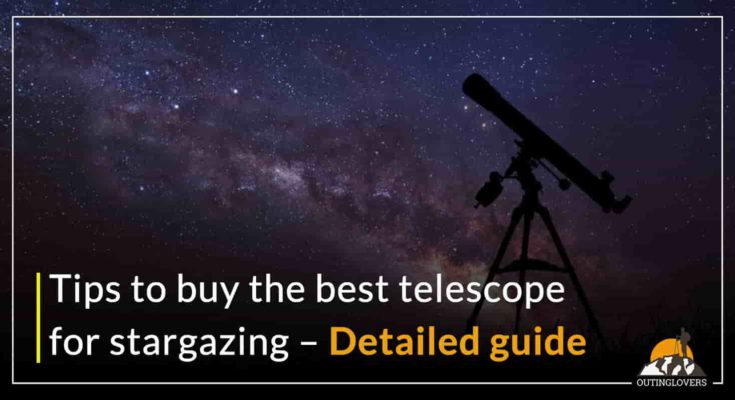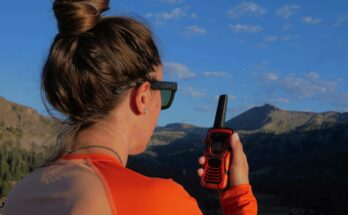Whether a hobbyist or a professional, when it comes to celestial observations, a best telescope for stargazing is what every enthusiast requires. Since the time of Galileo and his discovery of Jupiter’s biggest moons in January 1610 through his telescope, individuals have been continually captivated with having the option to perceive what lies past the world domains of Earth.
Whether being portrayed in literature, with the famous quote ‘Science has eliminated distances’ ,to the steady improvement and investigation into stargazing such as the landmark launch of the Hubble Telescope in 1990.
Telescopes have made wonders into reality and are a legit source of Knowledge, experiments and entertainment. The Milky Way galaxy contains over 100 billion stars, and with the help of a telescope, you can uncover the tiny details and see what the naked eye cannot.
Catalog
DIFFERENT TYPES OF TELESCOPES
Now, a quesion arises in your mind that what kind of telescope should i buy to see planets or what to look for when buying a telescope?
There are three basic types of telescopes which are as follows:
1. THE REFRACTOR TELESCOPE
The first kind of telescope utilizing a refractor instrument, and it includes a shape that a great many people know about. The front of this item has an enormous focal point, and as the focal point gathers light, it beams it into the mirror that is positioned in the back of the telescope.
By enhancing the capacities of a glass focal point, the refractor telescope can give improved core interest. At the end of the telescope cylinder, at least one lens and often more than one lens will attract light.
As the light goes through the viewpoint and down the length of the telescope tube, the underlying light is twisted. The light which has been bowed is then ready to go through a little lens known as an eyepiece. It can generally be considered as best beginner telescope for planets.
Pros
- Great for objects on Earth
- Very simple design and easy to use
- Requires almost no maintenance
- Sturdy design
- Sealed tube keeps optics safe
Cons
- Not a great choice for faint objects
- Holds less value than a reflector telescope
- Tends to be bulky and heavier than other styles
2. THE REFLECTOR TELESCOPE
The reflector telescopes works differently from the refractor and they have a mirror built into the end of the tube. The concept of using mirrors to gather light and images, then redirecting the reflected image for human observation, originated when Isaac Newton grappled with the Halo Effect
This idea prompted the plan of the principal reflector telescope. Although the initial design was massive and crude, advancements have consistently refined the reflector telescope into a slim and widely used model today.
The reflector telescope is usually considered the telescope for beginners.
Pros
- Features a compact, lightweight design
- Ideal for looking at faint objects
- More expensive than refractor telescopes
- Produces a high-quality image for you to look at
Cons
Cons:
- The optics tube is open and vulnerable to dust
- Not a good choice for Earth objects
- Needs regular maintenance
3. THE COMPOUND TELESCOPE
The third major form is the compound telescope, also known as a catadioptric telescope. Combining the features of the last two forms of telescopes we get the versatile compound telescope.
Unlike the other styles, this telescope features two mirrors, which are located in the front and back. The two mirrors work together with the lens to produce a high-quality image.
A compound telescope has a glass lens at the external base. This lens will attract all approaching light and afterward bend the light to an enormous mirror. A small mirror attached to the lens located in the outer base of the compound telescope captures the light.
The little mirror will at that point mirror a picture into the eyepiece situated inverse of the mirror. This propelled light control makes an idealized picture. It is considered the best professional telescope an example of which is orion 8945 skyquest xt8 classic dobsonian.
Pros
Pros:
- The optics tube is sealed to prevent dust accumulation
- Best choice for astrophotography
- Works well for Earth objects
- Good choice for viewing faint objects
Cons
Cons:
- Tends to be large and bulkier
- More expensive than other choices
- Image brightness is reduced by the additional mirror
CHOOSING THE RIGHT STYLE OF TELESCOPE
Choosing the one best suited for you is the question of consideration. Many people are not sure about what form to go with.
If you’re simply beginning with this hobby you can get a reflector or refractor telescope as best beginner telescope for planets. For buyers who need to avoid maintenance, a refractor telescope is an incredible decision to consider.
Refractor and compound scopes are extraordinary for watching feathered creatures and to view faint objects in the deep sky, compound and reflector telescopes are ideal.
For astrophotography, a compound degree is an incredible decision, and in the event that you simply need to get the most incentive for your cash, we suggest reflector scopes.
Some of the best telescopes for stargazing are:
- Levenhuk strike 90 plus – best beginner telescope for planets
- Orion skyquest xt8- best professional telescope
- Celestron 127eq powerseeker- best telescope for deep space
Tips For Properly Caring For Your Best Telescope for Stargazing
Consider any telescope as an investment, and it requires proper care. One crucial aspect of maintenance is cleaning the optics, and one should never overlook the importance of proper optics cleaning.
Here are some tips for caring for your Best Telescope for Stargazing:
- When not in use, always cover a telescope with a lens cap to protect the optics from dust.
- On the off chance that your extension doesn’t accompany a lens cap, you can cover it with a homemade top.
- Leaving your scope pointing towards the floor is also advisable, as this position prevents dust from settling onto the optics.
- Store additional eyepieces in a plastic bag, and avoid touching the lens or mirror inside your telescope.
- For cleaning purpose a brush made from camel hair is great for removing dust from a lens, and you can find many of these products in stores that sell many different types of cameras.
- If you accidentally spill some sort of residue onto the lens, there are special solutions that you can use to clean it e.g methanol solution.
Tips For Beginners: Choosing the Best Telescope for Stargazing
You have all the knowledge about what is the best telescope for beginners. Now, you need to know how to use a telescope for beginners?
One of the main tips we would like to give our readers who are beginners, is to have realistic expectations. You cannot always have those refined images of distant galaxies as taken from Hubble space station. Some other useful tips to consider are:
- Avoid buildings while setting
- Avoid windows while setting
- Make sure to adjust your eyes
- Practice using averted vision
- Start with the lowest eyepiece
Follow the above tips and enjoy your mesmerizing experience.



